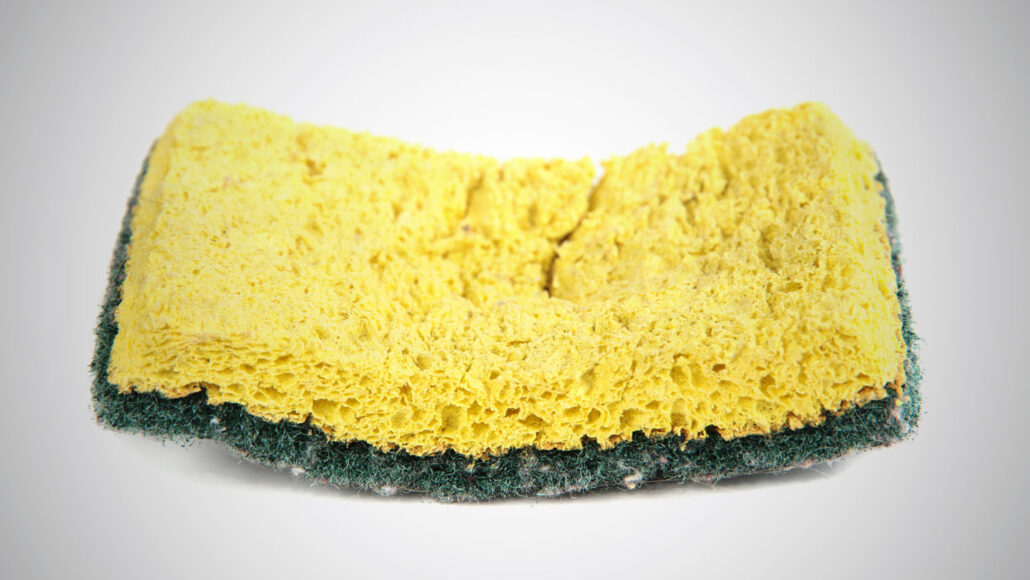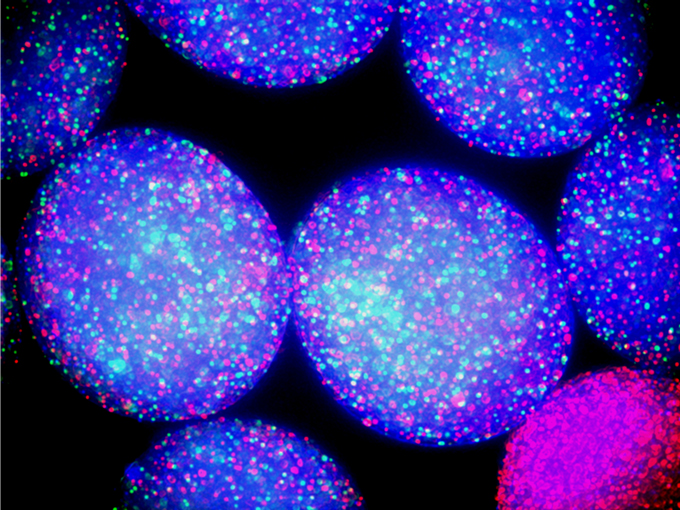Kitchen sponges are bacteria’s dream home
These cleaner-uppers provide an ideal living space in which microbes can thrive

Porous kitchen sponges provide the perfect number of living spaces of varying sizes for bacteria to occupy, a new study finds.
EricFerguson/E+/Getty Images Plus
By Anna Gibbs
Ask bacteria where they’d like to live, and they’ll answer: a kitchen sponge, please.
Damp, airy and loaded with food scraps, sponges are a paradise for microbes. Those sponges contain as many as 54 billion bacteria per cubic centimeter (one sixteenth of a cubic inch)! On top of that, sponges provide just the right number and size of living spaces for bacteria. Researchers shared their new findings February 10 in Nature Chemical Biology.
Like people, bacteria prefer different levels of interaction with their peers. Some are social. Others are more loners. Lingchong You wondered if separating different types of microbes would affect how they interact. You is a synthetic biologist at Duke University in Durham, N.C. Medium levels of separation maximize the number of bacterial types living in a community, he and his team now report. Those medium levels are similar to the structure of a sponge.
The researchers worked with many different strains, or types, of a bacterium called E. coli. The team placed the strains onto plates with six to 1,536 tiny wells. A well is a compartment on a plate used to grow microbes. Each well acted like a party room, You says. Bacteria were randomly assigned to the wells. The party went on for 30 hours. Then the team tallied the number and types of bacteria on each plate.
Let’s party
On a plate with only six compartments, each of the parties would probably get a similar mix of characters. There, only the social bacteria would likely survive. Those who don’t get along well with others might die. But on the plate with 1,536 compartments, each microbe would probably end up alone. Unable to schmooze with other bacteria, the social ones might perish.
A medium number of compartments should maximize the odds that a microbe attends the party it prefers. For example, one antisocial microbe might be placed in a party full of socializers. But another antisocial microbe might wind up at a chill gathering and survive. The same is true for social bacteria. In the end, some will die. Some will live. It just depends on which party a microbe attends. That means that some members of every type of bacteria could survive — and preserve the diversity of the whole community.

Kitchen sponges offer an ideal number of large and small holes — compartments for bacteria. They also provide a range of varying-sized parties that should make more of the microbes happy. So the researchers hypothesized that kitchen sponges would host a diverse mix of bacteria. Sure enough, their tests showed that sponges are home to a diverse bacterial community. And it’s more diverse than the communities found in liquid cultures. (Those cultures are a common method of growing bacteria in a lab.)
Luckily, the bacteria partying in your sponge are mostly the type that don’t cause disease. But if dangerous bacteria — such as Salmonella from raw chicken — do show up, the sponge’s structure will probably help them survive.
“Sponges are not really well-suited for kitchen hygiene,” says Markus Egert. He is a microbiologist at Furtwangen University in Villingen-Schwenningen, Germany. He was not involved in the study. “There’s hardly any sterile surface at home. But [in terms of microbes] the kitchen sponge is probably the most densely populated item at home.”
The good news is that it’s easy to solve the problem. Dish brushes are a much safer alternative. And if you love your sponge, don’t use it for meat juices. No need to invite bad bacteria to the party.







